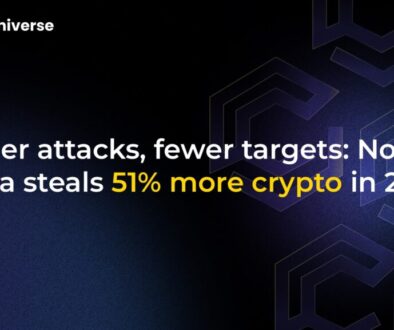US Emerges as Leading Bitcoin Mining Hub: Dominance, Challenges, and the Road Ahead

US Takes the Crown in Global Bitcoin Mining
The United States has firmly established itself as the global leader in Bitcoin mining. Recent data highlights the nation’s significant share of the worldwide network power, known as hashrate. A notable survey from Cambridge indicates that miners operating within the US contribute a staggering 75.4% of the reported global hashrate.
This rise to prominence wasn’t accidental. It reflects a focused effort within the country to cultivate and expand the Bitcoin mining industry, particularly following regulatory shifts in other major regions. Let’s delve into the factors driving this dominance, the critical role of energy, and the potential headwinds facing the sector.
Factors Fueling US Bitcoin Mining Dominance
Several key elements have contributed to the US becoming the world’s primary Bitcoin mining destination:
- Post-China Ban Opportunity: When China implemented a ban on Bitcoin mining activities in 2021, it created a massive vacuum in the global hashrate distribution. US-based operations were well-positioned to absorb much of this capacity, rapidly increasing the nation’s market share.
- Favorable Environment (Relative): While the regulatory landscape is still evolving and presents both opportunities and risks, the US has offered a relatively more stable and welcoming environment for miners compared to regions with outright bans.
- Investment and Infrastructure: Significant investment has flowed into US mining operations, funding the development of large-scale facilities often located in areas with access to competitive energy resources. The establishment of initiatives like the United States Investment Accelerator signals government interest in supporting the industry’s growth, particularly in achieving energy autonomy and reducing operational costs.
- Industry Growth Focus: Companies like Cleanspark and American Bitcoin Corp are actively expanding their operations, indicating strong confidence in the future of the US mining sector.
It’s worth noting that while the Cambridge Digital Mining Industry Report, based on data from 49 firms across 16 jurisdictions, points to the 75.4% figure, there’s a possibility of sample bias potentially overrepresenting US activity. Nonetheless, the trend of US leadership is undeniable.
The Crucial Role of Energy Costs and Efficiency
Profitability in Bitcoin mining hinges heavily on two factors: the cost of energy and the efficiency of the mining hardware (ASICs).
Mining requires substantial electricity, making energy the primary operational expense. High energy costs can quickly erode profits, especially during market downturns or after Bitcoin halving events, which reduce mining rewards. Consequently, miners are constantly seeking ways to optimize energy consumption and secure lower electricity rates.
Key strategies include:
- Seeking Low-Cost Energy: Miners often set up operations in regions with abundant and affordable power sources.
- Investing in Efficient Hardware: Newer generations of ASIC miners offer significantly better performance per watt consumed. While top-tier machines can cost between $5,000 and $10,000, their efficiency is vital for maintaining competitiveness.
- Utilizing Renewable Energy: There’s a growing trend towards sustainable practices. Using sources like solar, wind, hydro, and even nuclear power not only helps reduce the environmental footprint but can also provide cost-effective energy. Some studies suggest over half of Bitcoin mining energy now comes from sustainable sources (around 42.6% renewables and 9.8% nuclear).
As the industry matures and competition increases, energy efficiency and cost management become paramount for survival and success.
Potential Headwinds: The Impact of Tariffs
Despite the positive growth trajectory, the US Bitcoin mining industry faces potential challenges, most notably the threat of tariffs on imported mining equipment.
Since most high-efficiency ASIC miners are manufactured outside the US, tariffs could significantly increase the capital expenditure required to set up or upgrade mining facilities. This could lead to:
- Reduced Profitability: Higher hardware costs directly squeeze profit margins, making it harder for US miners to compete globally.
- Decreased Competitiveness: Miners in regions without such tariffs might gain a competitive edge.
- Slower Hashrate Growth: Increased costs could deter investment and slow down the expansion of mining capacity within the US.
- Potential Relocation: Some operations, particularly smaller ones, might consider moving to jurisdictions with lower setup costs and no tariffs.
- Supply Chain Uncertainty: Tariffs introduce uncertainty and potential disruptions into the mining hardware supply chain.
The imposition of significant tariffs could potentially stall the growth momentum the US has built and impact its dominant position in the global hashrate.
The Future of Bitcoin Mining in the US
The United States currently stands as the undisputed leader in the Bitcoin mining landscape, driven by strategic positioning, investment, and a focus on growth. The industry’s emphasis on energy efficiency and the increasing adoption of sustainable power sources are positive signs for its long-term viability.
However, challenges remain. Navigating the evolving regulatory environment and mitigating the potential impact of tariffs on essential equipment will be crucial. While analysts project continued growth in the global Bitcoin hashrate, the ability of the US to maintain its dominance will depend on its capacity to manage costs, foster innovation, and adapt to economic pressures.


